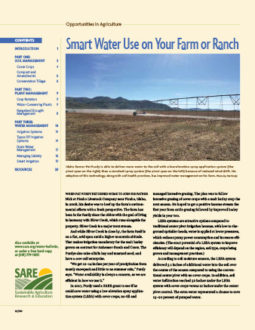
Photo by Edwin Remsberg
Conservation tillage leaves at least 30 percent of the soil surface covered by residue after planting. No-till planters leave even more than that by placing seeds or transplants in narrow slots, the only area where farmers disturb the soil. No-till also consistently improves water infiltration, with reports of up to three times the infiltration compared to moldboard-plowed soil.
Soil porosity and infiltration are likely to continue to increase the longer the soil is under no-till and is accumulating organic matter. Other benefits of reducing soil disturbance include increased biological activity by arthropods and soil microbes, deeper rooting depth for crops, and the surface residue that protects the soil from temperature extremes.
